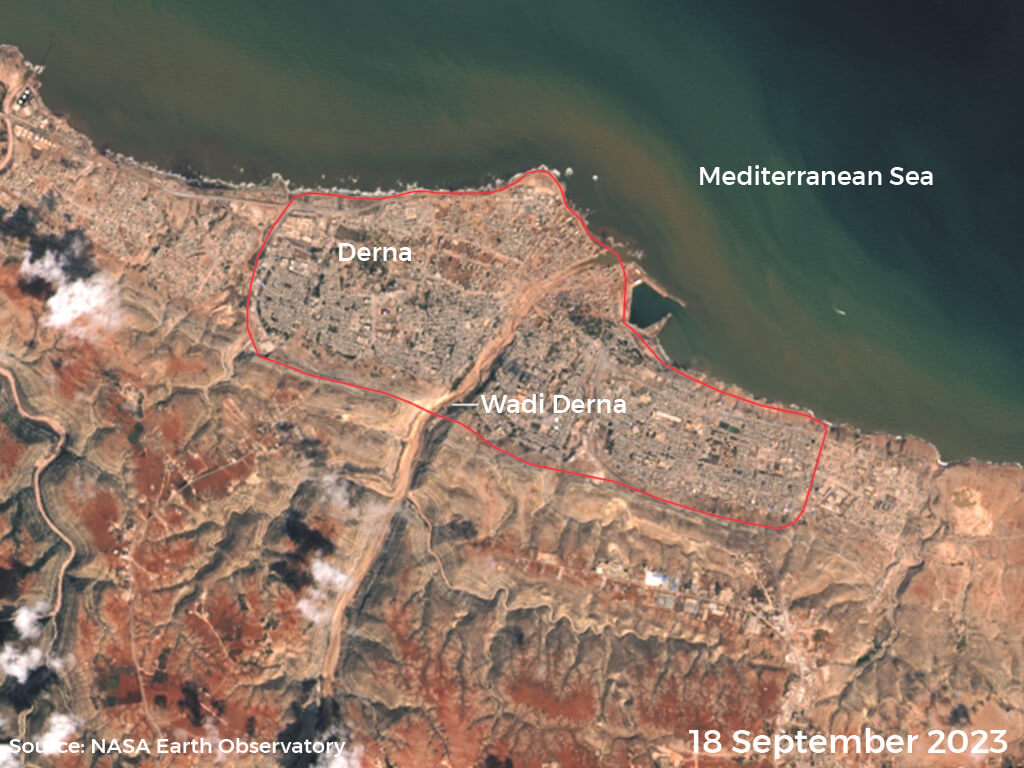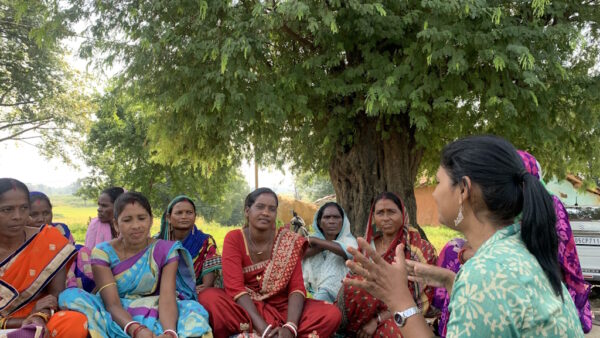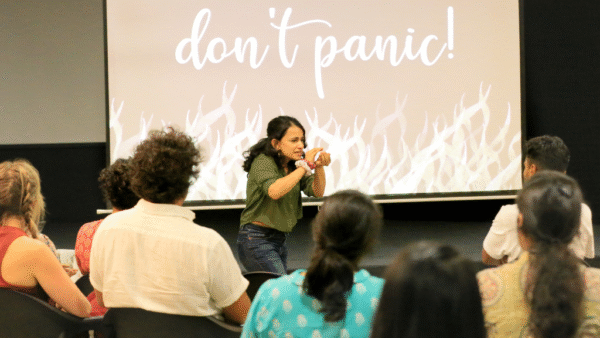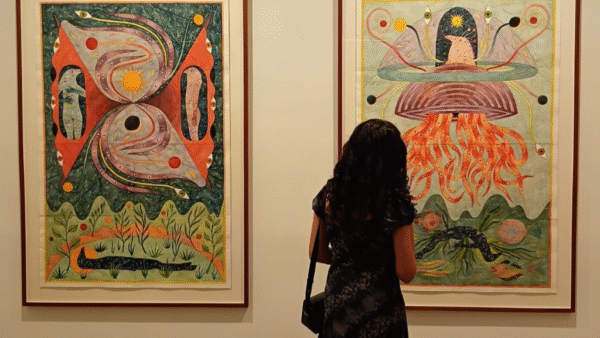In the early hours of September 11, residents of Derna in north-east Libya woke to the sound of loud explosions. After more than a decade of conflict – initially between the Gaddafi regime and local factions, then among militias fighting for rule – they were used to the noise.
But this was different. This was the breaking of two dams upstream towards the Jebel Akhdar (the Green Mountain) overwhelmed by the rain surge from Storm Daniel. A seven-metre wave thundered down Wadi Derna through the city, washing whole suburbs into the sea. Soon, thousands of people would be dead and tens of thousands missing.
But even as aid organisations and foreign medical services were trying to organise rescue and recovery operations, Elseddik Haftar – eldest son of the regional warlord General Khalifa Haftar – chose the moment to announce he was planning to stand as a candidate in the next presidential election.
That moment is almost the perfect metaphor for the plight of Derna – and for Libya itself. A cataclysm of climate change, neglect and conflict, made worse by one family’s relentless quest for power.
It’s not that there hadn’t been ample warning of the dangers facing Derna. In November 2022, hydrologist Abdelwanees Ashoor of Omar Al-Mukhtar University in nearby Bayda published research[1] that showed that the barriers needed urgent attention[2] if they were to hold for much longer. As Derna’s deputy mayor, Ahmed Madroud, acknowledged after the flood hit[3]: “The dams have not been maintained since 2002.”
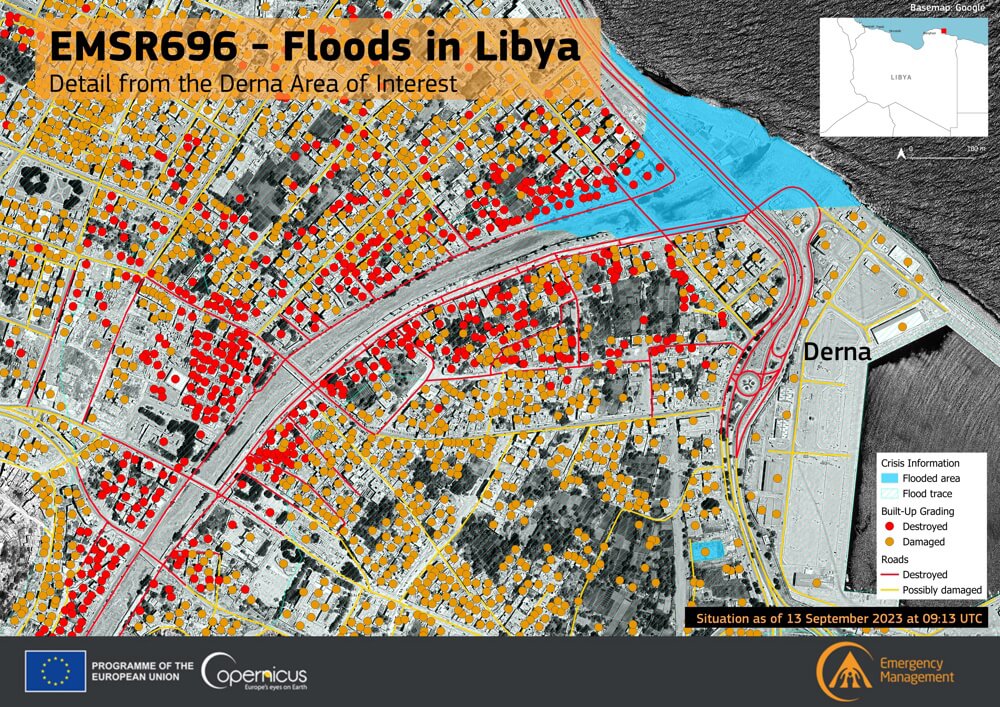
Derna: a story of conflict and neglect
The reason for this stretches back to the authoritarian years of Muammar Gaddafi. From the time Gaddafi took power in 1969, dissident factions in eastern Libya, including Derna, chafed at his rule and his base among western tribes. Gaddafi responded by depriving the region of resources and investment.
The dictator’s demise brought no relief or stability for the east. In the factional struggle that ensued, two main competitors emerged: the Government of National Unity based in Tripoli, backed by the UN and led today by prime minister Abdul Hamid Dbeibeh.
In the west and south, meanwhile, Haftar built a power base in Benghazi and Tobruk from where his National Liberation Army held sway with the help of foreign allies such as Russia, Saudi Arabia, the UAE, Egypt and France. To lend a veneer of credibility, Haftar established a parliament in Tobruk with a government led by prime minister and career politician Osama Hamad, who owes his position to Haftar.
Both sides have put a priority on building up armies and militias rather than the day-to-day necessities of infrastructure and services.
In a country ravaged by civil war for more than a decade, Derna has suffered more than most areas. The city had always been a hotbed of political dissent, and in 2014, it was seized by militants who declared it to be part of the Islamic State caliphate. Haftar laid siege to the city from 2015 until its fall in 2018. Since regaining power there he has been accused of reprisals against civilians and political opponents.
The mutual distrust between local citizens and Haftar means that there has been virtually nothing in the way of reconstruction and development for the battered city and, most importantly, the dams that held millions of gallons of water for irrigation and drinking.
Instead, Haftar’s Military Investment Authority[4] was established as a family vehicle, exploiting industries and resources across the board, including agriculture, energy and construction. Deforestation above Derna accelerated, with trees cut down for holiday homes and businesses and for sale of the wood as charcoal.
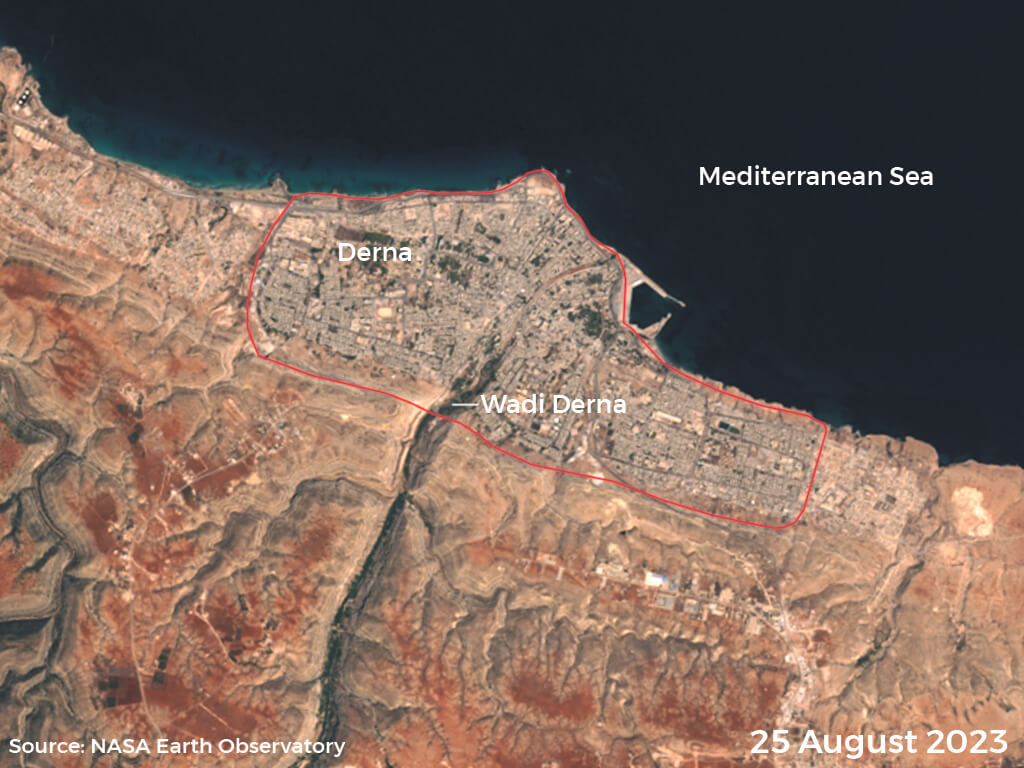
Exploiting the disaster
Once Storm Daniel made landfall in Libya, it was clear Derna was in danger. With no clear organisation in place, Derna’s civic officials and Haftar’s personnel issued contradictory instructions.
The city’s mayor, Abdulmenam al-Ghaithi, said he had ordered an evacuation, but that other officials ordered a curfew and texted residents to stay in place. As Derna reeled from the disaster, the Haftar family assumed control. Another of Khalifa Haftar’s six sons, Brigadier General Saddam Haftar, was given the task of overseeing rescue efforts.
His father, meanwhile, was supposedly[5] “assessing the needs of rescue crews and ensuring they have the necessary capabilities and resources to conduct operations safely and efficiently”.
But any appearance of order or organisation was punctured when journalists asked a relief doctor what he knew about the death toll and he broke down, admitting he didn’t know how many of his fellow citizens had perished. Nor does anyone else. After years of strife in Derna, there is little in the way of bureaucracy that might otherwise collate this sort of information.
Reports vary wildly. The Turkish Red Crescent has estimated the toll at more than 11,000[6] with a further 10,000 people missing. Meanwhile, the UN Office for the Coordination of Humanitarian Affairs assessed the number of deaths at 3,958[7]. A quarter of all buildings in Derna have been affected: almost 900 buildings destroyed, more than 200 partly damaged and almost 400 completely submerged in mud.
Haftar, meanwhile, played politics, touring the stricken city in what has been described as a public relations exercise, halting for an hour the efforts of search and rescue teams made up mainly of volunteers. Emadeddin Badi, Libya analyst with the Atlantic Council, told the Guardian[8] that Haftar and his entourage were “creating bottlenecks rather than being conducive to the provision of relief”.
Meanwhile in Paris, Elseddik Haftar was furthering his political ambitions, telling journalists: “I think I have all the means to relieve and stabilise Libya, and put in place the cohesion and unity of Libyans.”
He has the blessing of his warlord father who, in 2021, had announced he would run for the presidency, but has stepped aside at the beginning of 2023 to allow one of his sons to carry on the family business. In the Haftar family’s business model, it seems, the people of Derna are expendable.
Scott Lucas joined University College Dublin in 2022 as Professor of International Politics, having been on the staff of the University of Birmingham since 1989. He began his career as a specialist in US and British foreign policy, but his research interests now also cover current international affairs, New Media, and Intelligence Services. A professional journalist since 1979, Professor Lucas is the founder and editor of EA WorldView, a leading website in daily news and analysis of Iran, Turkey, Syria, and the wider Middle East, as well as US foreign policy. This piece has been republished from The Conversation under the Creative Commons Licence.
Cover photo: The eroded banks on Wadi Derna on September 18. Credit: Earth Observatory, NASA ![]()

